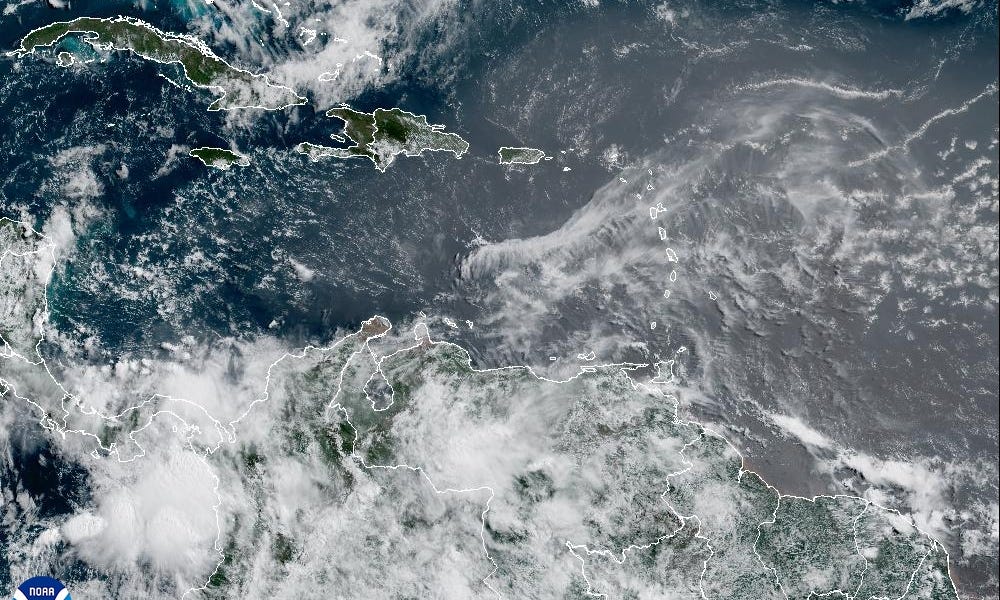Scientists: Webb Telescope May Find Planet Around Closest Bright Star
Alpha Centauri, one of the two "Pointer Stars" that help stargazers find the Southern Cross in the ... More Southern Hemisphere, may have a planet in orbit around it. If it does, the Webb Telescope will find it — as long as it's Jupiter-sized.
gettyThe closest star to the sun, Proxima Centauri, has a planet. It may even have two planets. Proxima Centauri is located in the constellation Centaurus, visible only from the southern hemisphere, but it's a red dwarf star too small to be seen. That brightest star in Centaurus — and the third brightest in the entire night sky — is Alpha Centauri. It's two stars (Alpha Centauri A and Alpha Centauri B) orbiting each other, with Proxima Centauri orbiting them every 550,000 years, in a weird-sounding (but not rare) three-star solar system.
Does Alpha Centauri have planets around it? It’s a Holy Grail among planet-hunters, mostly because Alpha Centauri is only 4.37 light-years distant. Since it's so close to the solar system, it’s theoretically an ideal target for astrometry (the study of the movements of stars and celestial bodies), as well as for direct infrared imaging using the James Webb Space Telescope, two techniques that can detect planets orbiting distant stars — exoplanets. A new paper published this week in Research Notes of the American Astronomical Society details the use of the Webb telescope to study Alpha Centauri in February 2025. Although it didn't detect any planets, it provides glimpses of what may still be hiding around the star.
The Alpha Centauri star system — a triple-star planetary system.
gettyAccording to the paper, the Webb telescope's Mid-InfraRed Instrument would have detected gas giant planets like Jupiter at about twice the Earth-sun distance from Alpha Centauri A if they were roughly similar to Earth’s temperature.
It's tricky because, in a system with two bright stars, light pollution is always a problem. Although the Webb telescope has a coronagraph disc to block the light from the host star (by creating an artificial eclipse) to help it detect planets in the vicinity, it doesn't have two coronagraphs to use on two separate stars. Despite that — and despite Alpha Centauri Ac being five billion years old, meaning any planets in its orbit would likely be very old, cool and therefore dim — the scientists think the Webb telescope can still be used to find large Jupiter-sized planets in its orbit. The authors call Alpha Centauri "an exceptional but challenging target for exoplanet searches."
This early conclusion is based on just one set of observations from February 2025. Webb also observed Alpha Centauri A in August 2024 and April 2025, so more conclusions — and possibly a discovery of a planet — could be imminent.
Illustration of the Earth-like exoplanet Proxima Centauri b orbiting the star Proxima Centauri. ... More (Illustration by Tobias Roetsch/Future Publishing via Getty Images)
Future Publishing via Getty ImagesIn 2016, astronomers found an exoplanet in Proxima Centauri’s habitable zone and named it Proxima Centauri b. This exoplanet orbits its star every 11 days from just 5% of the Earth-sun distance from the star.
Proxima Centauri b is thought to orbit the star’s “habitable zone,” which is defined as a distance that allows temperatures to be warm enough for liquid water to pool on the planet’s surface. However, it's thought that Proxima Centauri sometimes unleashes a massive stellar flare — an energetic explosion of high energy radiation — that would make life as we know it impossible on any planets in orbit.
A paper in 2020 suggested that Proxima Centauri may be orbited by a second "super-Earth" sized planet (bigger than Earth, but smaller than Uranus) about the same distance from its star as Mars is from the sun. If it exists, it orbits Proxima Centauri every 5.2 Earth years.
Barnard’s star is one of the fastest-moving stars in the night sky because it’s just six light-years from the solar system. In October 2024, scientists unveiled a planet around it thought to be about half the size of Venus. Called Barnard’s b, it's around 20 times closer than Mercury is to the sun.
Wishing you clear skies and wide eyes.












